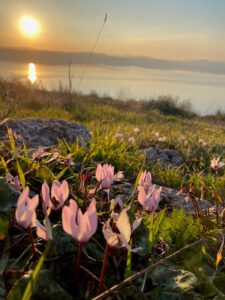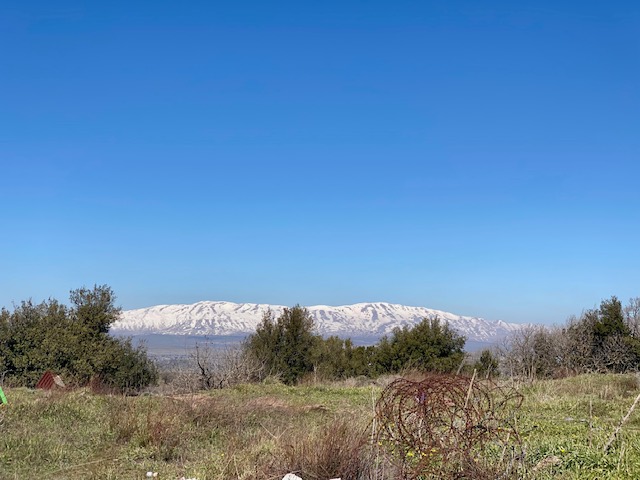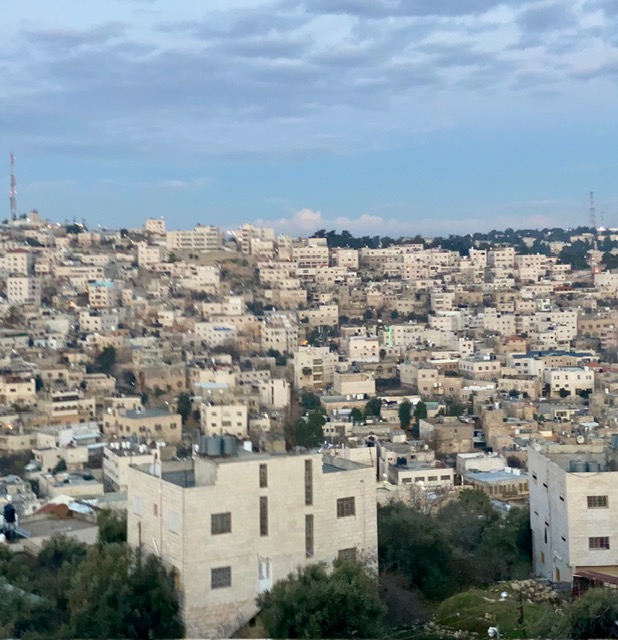Spring in Israel with peaceful flowers.
Last year I was absolutely enthralled about my first voyage to Israel and my first experience as a guest of ‘Servas’ I met wonderful people who helped me discover another aspect of Israel, then what I knew from the media. Last year, I already wrote about this.
This year, I returned in February in order to admire the magnificent wild spring flowers.
Last year I saw only one black iris in the natural reserve of Netanya. This year I wanted to come back to see more of these flowers in full blossom. I learned that in late winter and early spring you can spot wild cyclamen (rakefet in Hebrew). I knew cyclamen only as a potted plant and the possibility of being able to spot it in wild nature was reason enough to buy my flight ticket.


Moreover, last year I was not in the possibility to visit the Westbank because of Ramadan. This year, I very much wanted to visit a Palestinian city. I also wanted a guided visit of East Jerusalem, more specifically the district ‘Sheik Jarrah’ which made the headlines in Belgium because of the evictions of Palestinian families for different reasons.
So I had a rather crammed program. Luckily, my Servas hosts were very helpful in finding guides and transportation facilities. The black irises in the nature reserve of Netanya as well as the coast were most impressive.
Despite the weather I could admire the cyclamen near Tiv’on and the anemones in different colours (white, pink, lilac) in Yokne’am Illit. Later on in my voyage I could admire more cyclamen at the lake of Tiberias (or lake Kinneret in Hebrew). Together with my Servas host we went to have a look at the extraordinary beauty of the anemones in Negev. This floral splendor attracts each year in February thousands of visitors.In the Negev desert we stayed with other Servas members in a kibbutz near Gaza. In this way I got acquainted to life in a Kibbutz. I saw how barren land was transformed in a beautiful park full of trees and shrubbery, despite the lack of water. From the Kibbutz Gaza was only 2 kilometers away. Before the Oslo Accords and before Hamas came to power there were regular contacts between the inhabitants of Gaza and the people of the Kibbutz. These went shopping in Gaza city. Nowadays that is no longer an option. On the contrary, shelters are necessary and in order to protect children against rocket attacks schools had to be reinforced with concrete roofs. The people living there stayed calm under these permanent threats. Live goes on!
After the visit to Negev I pursued my trip in northern direction, to the Golan Heights. Until fifty years ago it was barren land. Now there are vineyards with famous wines, as well as olives, apples and cherries. This is all the more remarkable as water is extremely scarce in the Golan Heights. But large water reservoirs were built in order to irrigate farm land.
My Servas host guided me through the magnificent natural beauty of the Golan heights. Again, I could admire small yellow irises. Up north we made a trip along old oak woods, remnants of the large oak forests of the Ottoman empire. Between the rocks under the old oak trees we could admire blue irises and other spring flowers that I never saw growing wild.


I also could see the Hermon mountain, covered up with snow, near the Syrian border. From the desert to the snow: it shows the big variety of the Israelian landscape. Syria is very near but at the same time far away. Belgians are not familiar with closed borders anymore. Even if everything looks peaceful it feels somewhat weird to be only a few kilometers away from war territory. Beside all this wonderful natural beauty I paid a short visit to Tel Aviv and Nazareth. Jerusalem became my starting point for my visits to the surroundings of Jerusalem, East Jerusalem which included a guided visit to the Sheikh Jarrah district and the Westbank. I was also able to visit a beautiful exhibition in the Israeli Museum, the cemetery and the impressive memorial building on mount Herzl and to make a daytrip to Masada near the Death Sea.
With a Servas host I went to visit the surroundings of Jerusalem and his family who lived on the West Bank, some years even before the Oslo accords. This is, by the way, why I find Servas such a wonderful organization: without it I would never be in the possibility to visit these areas, talk and listen to these families and the reasons why they chose to live there. In order to get there you must pass a number of control posts. Along the way you see a number of red prohibition signs, which means that the territory is controlled by the Palestine Authority where Israeli citizens are not allowed to enter the territory.
By an organized tour I was able to visit the Palestinian city of Hebron, one of the oldest cities in the world with the tombs of the patriarchs who are so important for three religions, Jewish, Christian and Islam.

It is an impressive building from the period of the Jewish king Herodes the Great. Now the building is divided in two parts: a synagogue and a mosque.
According to the protocol of Hebron of 1997 the city is divided in two zones. H1 is under Palestinian control and H2 is ruled by Israel, a small territory in the old city. There are several checkpoints that make normal life difficult. A number of Jewish families live in a small zone in the old city, protected by the Israeli army. Non-Israelis can visit all parts of the city without border limitations. The general aspect of the city makes one think of the old city of Berlin, before the ‘Wende’ when it was divided by a wall between east and west. Peaceful coexistence between Palestinians and Israelis is a distant dream after a visit of Hebron. Still there are people working hard on peace. There is an organization called ‘Women wage peace’. Since 2022 it works together with the Palestinian organization ‘Sisters of the sun’. Hopefully with positive results. People ask me if I ever felt unsafe in Israel. I must say this was not the case. I felt more safe in Israel than in some parts of Antwerp or Brussels. I was never afraid in Israel, not in the streets and not on public transportation. I often think of the nice people I met, like the members of Servas that made sure I could realize all of my plans and who have learned me so much about their beautiful country.
Thank you Servas and especially Servas Israel for your warm hospitality. I give a big hug to all the people, friends and family who have helped me and inspired me for this dream voyage.
Dreaming away, all these wonderful flowers from the Golan heights up to the Negev seemed to carry little signs:
NO TERROR – PEACE NOW!
